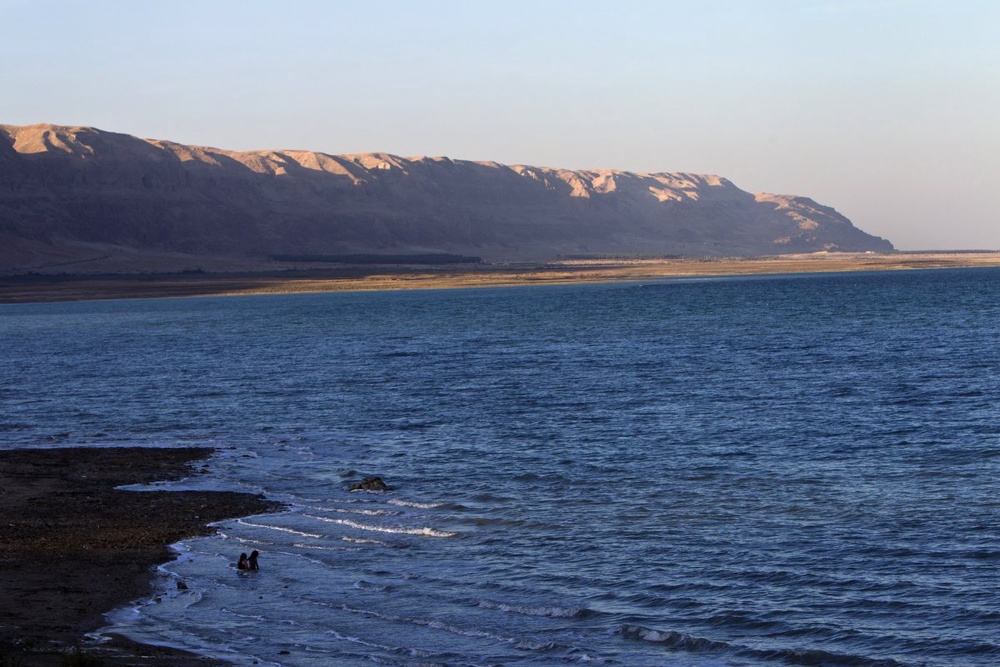
Millions of birds that stop at coastal wetlands during annual migrations could die as rising sea levels and land reclamation wipe out their feeding grounds, AFP reports citing researchers warninged. The study into the migratory habits of shorebirds predicted that a loss of 23 to 40 percent of their main feeding areas could lead to a 70 percent decline in their population. Led by a team of scientists from Australia's government-backed National Environmental Research Programme, the study said some areas have already reported alarming population losses of 30-80 percent. "Each year, millions of shorebirds stop at coastal wetlands to rest and feed as they migrate from Russia and Alaska to the coasts of Southeast Asia and Australasia," said researcher Richard Fuller. "We've discovered that some of these wetlands are highly vulnerable to sea level rise and might be lost in the next few decades. "If the birds can no longer stop at these areas to 'refuel', they may not be able to complete the journey to their breeding grounds." The researchers studied wetlands along migration routes across Alaska, Russia, China, North Korea, South Korea, Japan, Philippines, Vietnam, Thailand, Malaysia, Indonesia, Papua New Guinea, Australia and New Zealand. In many cases rapid coastal development and reclamation for agriculture were already chewing into tidal wetlands the birds use as feeding grounds on their long journeys, which sometimes extend half way around the world. Species showing signs of being in trouble include the bar-tailed godwit, curlew sandpiper, great knot, grey-tailed tattler, lesser sand plover, and red knot, said the study, published in the Proceedings of the Royal Society journal. The scientists used "graph theory", a mathematical approach, to estimate the impact of the loss of these wetlands on shorebirds. It found that if a tidal wetland habitat served as an important "stepping stone" for the shorebirds, a small amount of habitat loss could trigger disproportionately large declines in bird populations. "This is because some of these tidal wetlands are 'bottleneck' sites where the majority of the birds stop to refuel," said Takuya Iwamura, of Stanford University. "For example, we discovered that a sea level rise of 150 centimetres (59 inches) may result in the loss of 35 percent of coastal wetlands, but it could lead to a 60 percent decline in curlew sandpipers, eastern curlews and great knots." The scientists are embarking on a second study to identify the best ways to save the disappearing shorebirds and get a better grip on the scale of the problem.





Millions of birds that stop at coastal wetlands during annual migrations could die as rising sea levels and land reclamation wipe out their feeding grounds, AFP reports citing researchers warninged.
The study into the migratory habits of shorebirds predicted that a loss of 23 to 40 percent of their main feeding areas could lead to a 70 percent decline in their population.
Led by a team of scientists from Australia's government-backed National Environmental Research Programme, the study said some areas have already reported alarming population losses of 30-80 percent.
"Each year, millions of shorebirds stop at coastal wetlands to rest and feed as they migrate from Russia and Alaska to the coasts of Southeast Asia and Australasia," said researcher Richard Fuller.
"We've discovered that some of these wetlands are highly vulnerable to sea level rise and might be lost in the next few decades.
"If the birds can no longer stop at these areas to 'refuel', they may not be able to complete the journey to their breeding grounds."
The researchers studied wetlands along migration routes across Alaska, Russia, China, North Korea, South Korea, Japan, Philippines, Vietnam, Thailand, Malaysia, Indonesia, Papua New Guinea, Australia and New Zealand.
In many cases rapid coastal development and reclamation for agriculture were already chewing into tidal wetlands the birds use as feeding grounds on their long journeys, which sometimes extend half way around the world.
Species showing signs of being in trouble include the bar-tailed godwit, curlew sandpiper, great knot, grey-tailed tattler, lesser sand plover, and red knot, said the study, published in the Proceedings of the Royal Society journal.
The scientists used "graph theory", a mathematical approach, to estimate the impact of the loss of these wetlands on shorebirds.
It found that if a tidal wetland habitat served as an important "stepping stone" for the shorebirds, a small amount of habitat loss could trigger disproportionately large declines in bird populations.
"This is because some of these tidal wetlands are 'bottleneck' sites where the majority of the birds stop to refuel," said Takuya Iwamura, of Stanford University.
"For example, we discovered that a sea level rise of 150 centimetres (59 inches) may result in the loss of 35 percent of coastal wetlands, but it could lead to a 60 percent decline in curlew sandpipers, eastern curlews and great knots."
The scientists are embarking on a second study to identify the best ways to save the disappearing shorebirds and get a better grip on the scale of the problem.

 +7 (777) 001 44 99
+7 (777) 001 44 99















































